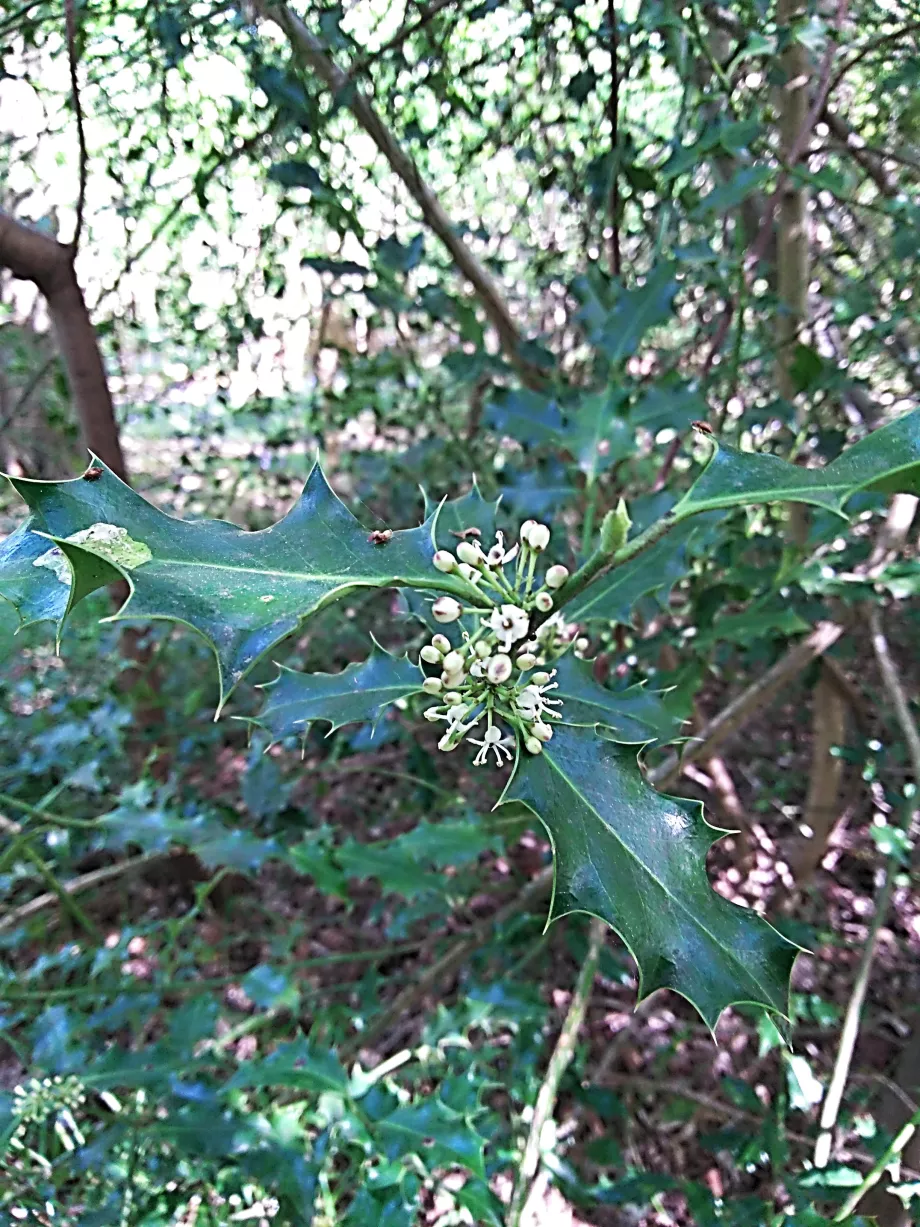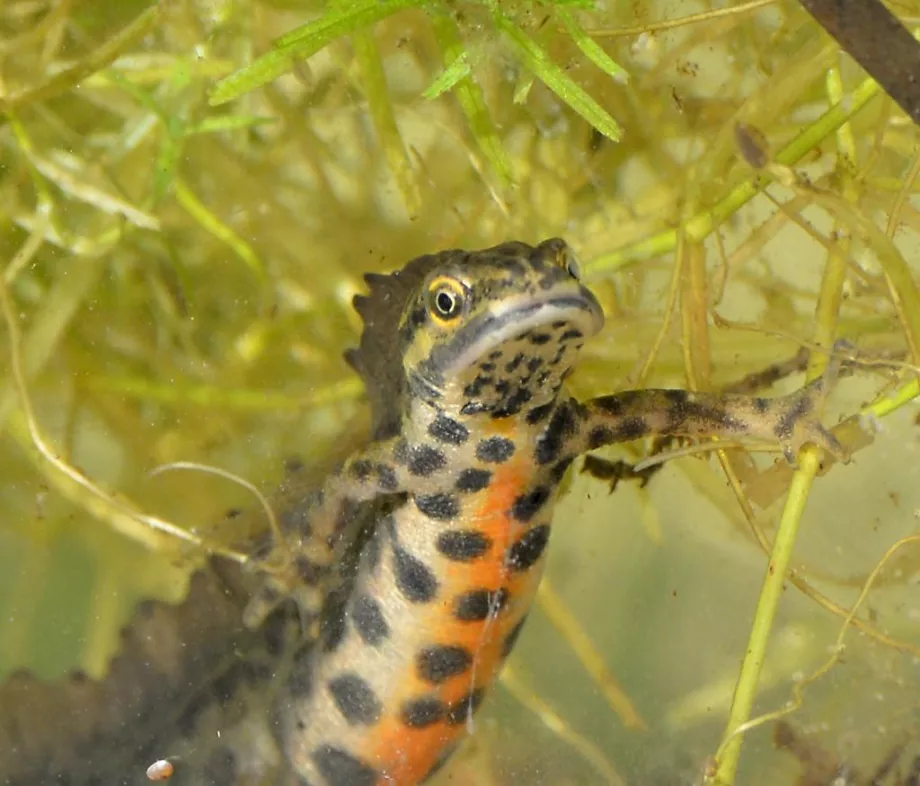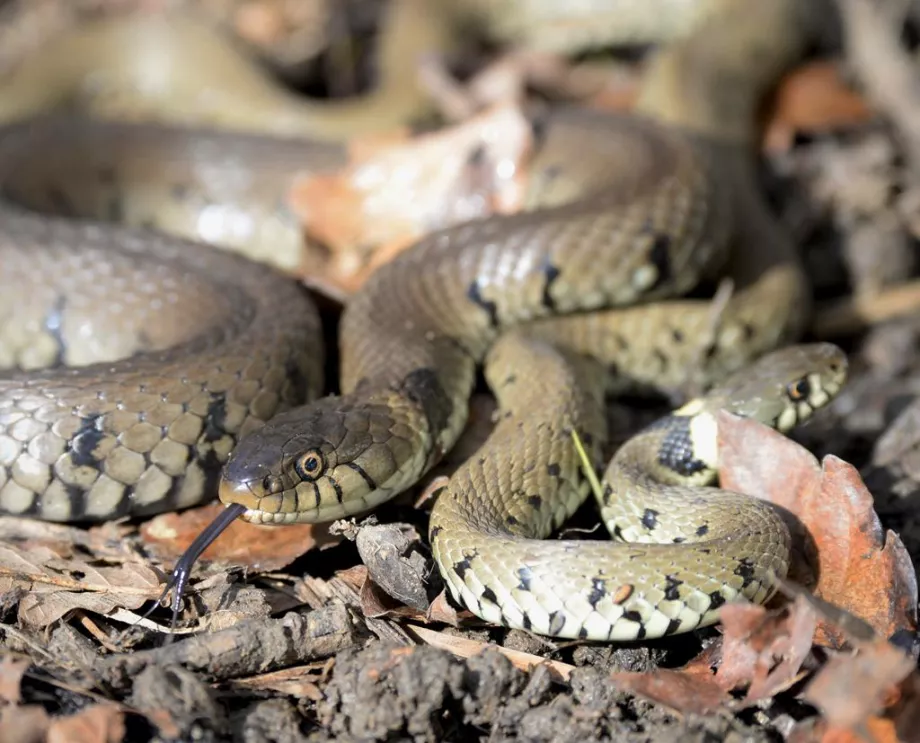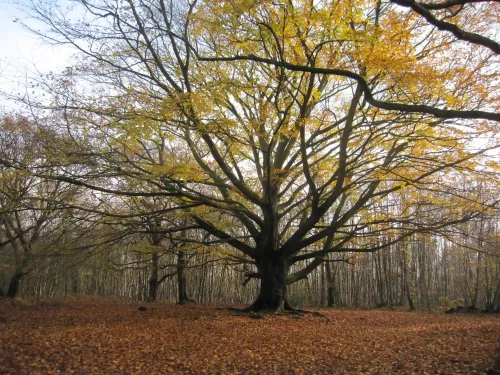
10 must-visit Kent woodlands
Be sure to check out these 10 woods whilst exploring Kent, each offering something a little different across the county.


Male flowers on holly; there will be no berries on this tree. On holly, the male and female flowers appear on separate trees, the flower shown has stamens only, and no ovaries. ©Lynne & Peter Flower
A fresh green of bursting leaves creep over the hawthorn bushes, and already bees and hoverflies are searching out the first white flowers.
From deep within, the short bouncy notes of a blackcap can be heard. Flown from its overwintering grounds in Southern Europe or North Africa.
As our path crosses the field we stop to look with our binoculars down into the depths of the farm pond. A single bubble briefly disturbs the surface, and we see a male common newt turn quickly from taking a breath of air, and wiggle away, darkly blotched, a wavy crest over his back, dives to greet a golden-brown speckled female. He follows her in a courtship dance, flashing the colours at the base of his tail as he wafts his irresistible scent to attract her to pick up the sperm packet he will drop for her. If you have a pond in your garden, you may see this spectacle yourself. Newts and other wildlife are quick to colonise garden ponds.

Male Smooth (Common) newt ©John Phillips
Before moving on, we quietly lift the corrugated metal cover in the sun nearby, placed by a surveyor for KRAG (Kent Reptile & Amphibian Group) and are delighted to see a male and female grass-snake recently woken from their winter hibernation, warming ready for action. Around the cover is a spread of a low growing plant in flower. Treading on the leaves releases a pungent aroma – this is ground ivy – the plant was once used to flavour and preserve beer, loved by bees.

Grass snakes ©John Phillips
Not everyone is lucky enough to have access to Kent’s countryside in these difficult times, but if we all work together for a Wilder Kent, we may be able to encourage more of these wonderful creatures into our towns and gardens. Visit the Wild about Gardens page for more information on how you can create wilder spaces.

Be sure to check out these 10 woods whilst exploring Kent, each offering something a little different across the county.

Since bison were released into West Blean and Thornden Woods on the outskirts of Canterbury, they have not only transformed the landscape but significantly grown in number.

Natasha Ruskin explores something terrifying: a world without woodlands.